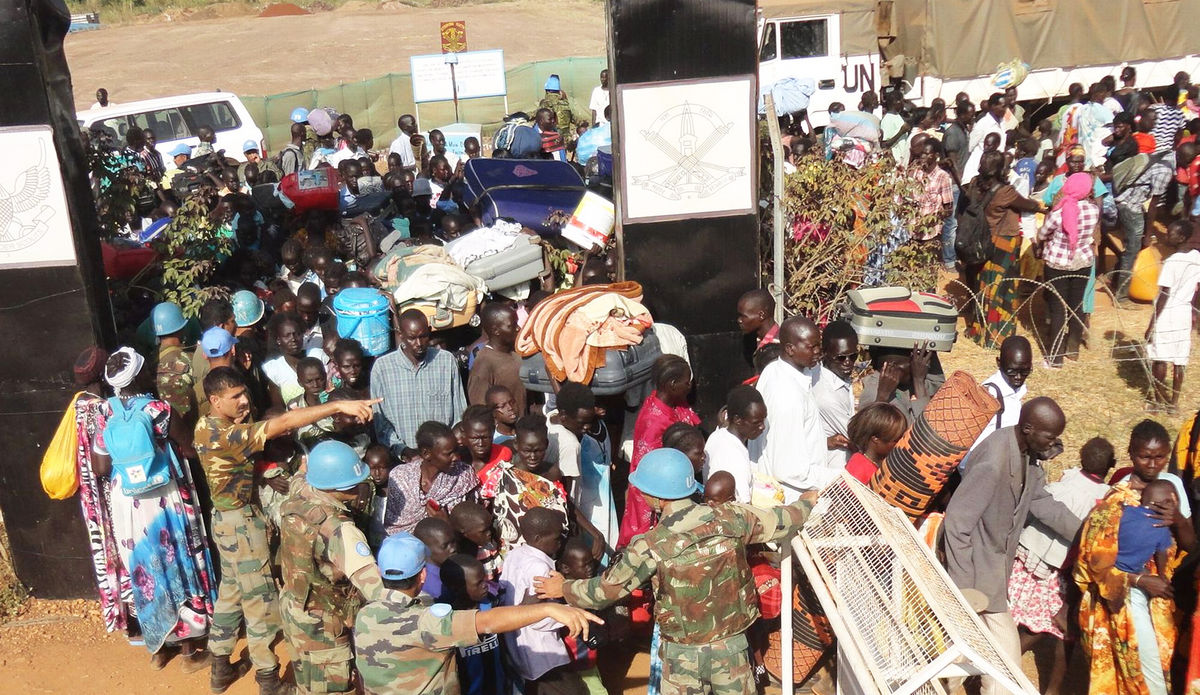During the mid-1990s, peacekeepers found themselves deployed in internal conflicts, in which the civilian population frequently became the target of attacks. Missions like UNAMIR in Rwanda and UNPROFOR in the former Yugoslavia were faced with systematic attacks on civilians that peacekeepers were ill-prepared to address. These conflicts, as well as those in Somalia, Sierra Leone and Timor-Leste, witnessed armed groups targeting civilians, including the use of sexual violence as a tactic of war and grave violations of children’s rights.
As a result, the Security Council placed the protection of civilians on its agenda and developed an architecture of resolutions that strengthened the role of peacekeepers to protect. Mandates and rules of engagement were clarified to ensure that peacekeepers had the authority to act. The Council also passed resolutions to establish frameworks to address children in armed conflict and conflict related sexual violence.
States always have the primary responsibility to protect their populations. Peacekeepers first role is to support governments to uphold their protection responsibilities through advice, technical and logistical support and capacity building. Peacekeeping missions also seek, through political good offices and mediation, to take a preventive approach to protecting civilians. As a last resort, however, many peacekeepers are authorized to act to physically protect civilians.
More than 95% of peacekeepers today are mandated to protect civilians
This including protecting children and protecting against conflict-related sexual violence.The vast majority of peacekeepers today serve in missions with mandates that prioritize the protection of civilians. The High-level Independent Panel on Peace Operations found that protecting civilians is a core obligation of the whole UN, not only peacekeeping. This work finds its most visible expression, however, in the work of blue helmets. This challenging mandate is often the yardstick by which the international community, and those whom we endeavor to protect, judge our worth as peacekeepers.
How do we protect the people affected by a conflict?
Modern peacekeeping has a number of tools to support the protection of civilians:
- Political leaders engage with governments and other actors to mitigate and prevent conflict;
- civilian experts, including Child Protection Advisers, Women’s Protection Adviser’s and Protection of Civilians Advisers, engage in a range of activities, including demobilizing child soldiers, persuading armed groups to stop sexual violence and coordinating military operations to protect civilians;
- our military and police personnel bring unique skills to provide security and stability;
- experts in strengthening the rule of law and human rights further ensure the establishment of a protective environment.
A challenging mandate
As might be expected of any organization that serves as a last resort in times of conflict and crisis, peacekeepers face challenges and constraints, particularly in protecting civilians. Even large peacekeeping missions deploy relatively few personnel compared to the size of the territory and population. MONUSCO, for instance, has more than 17,000 troops deployed yet operates in a country with a population of more than 82 million people spread out over more than 2.3 million square kilometres (a ratio of a single troop for every 4,800 people and 135 square kilometres). This is compounded by the fact that many countries where peacekeepers are deployed suffer instability, often with poor infrastructure and limited local security services. For peacekeeping missions, meeting these challenges requires careful planning and strategy to protect the greatest number of people as effectively as possible. It also requires ensuring that the host government, the population and the international community understand the importance of peacekeepers but also their very real limitations.
“We should not forget that our peacekeepers – civilian, police, men and women, military personnel – are saving lives every day. They are protecting civilians and they are helping peace processes be implemented… It is important to recognize the added value of peacekeeping and what we bring to the societies and nations that are destabilized.” - Under-Secretary-General Jean-Pierre Lacroix
25 Years of Protecting Civilians
Over the past 25 years, the POC mandate has become a cornerstone of UN peacekeeping operations, shaping how missions prevent and respond to violence against civilians.
To commemorate this 25-year journey, we are sharing a collection of personal stories and reflections showcasing POC efforts on the front lines. This Profiles in Protection series traces the evolution of the POC mandate from its inception in 1999 to the present day. From field missions in conflict-affected areas to strategic decision-making at the UN Security Council, the profiles capture the breadth of contributions from those advancing the POC mandate, share their perspectives, and honour their commitment to protecting civilians and promoting peace amidst some of the world’s most challenging conflicts.
All twenty-three Profiles in Protection can be read in this special booklet.

